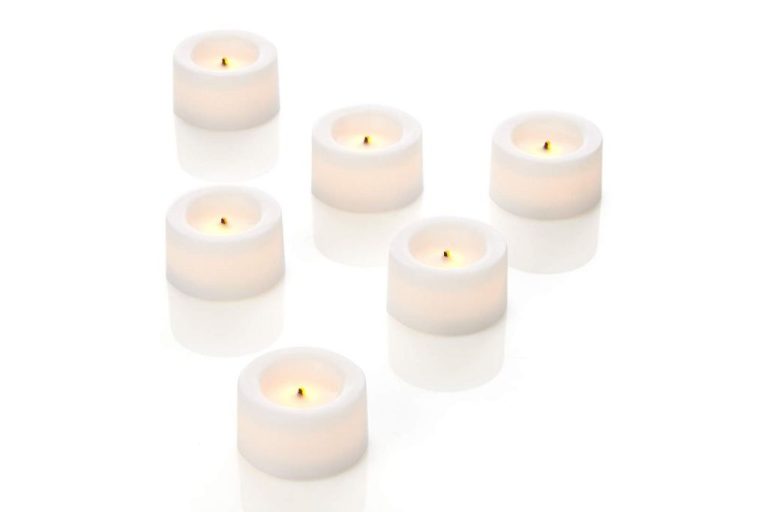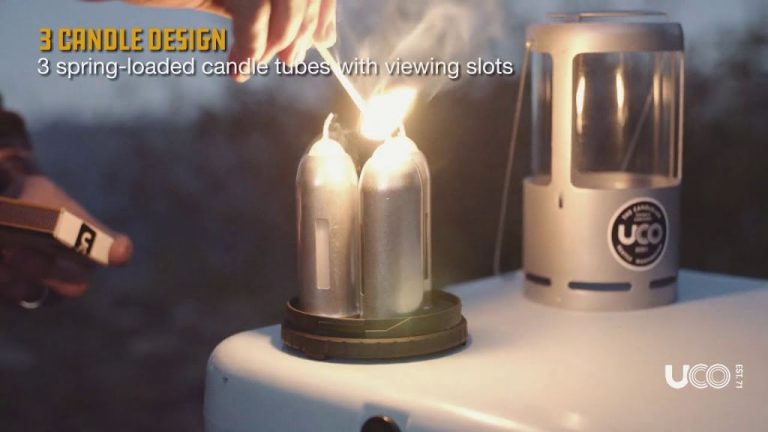What Happens If A Candle Is Left Burning?
The Hidden Dangers of Candle Fires
Candles may seem harmless, but they are responsible for some alarming home fire statistics. According to the National Fire Protection Association (NFPA), candles caused an estimated 6,300 reported home fires in the United States in 2020 alone. These fires resulted in 80 civilian deaths, 660 civilian injuries, and $292 million in direct property damage.
In this article, we will explore what happens when a candle is left burning unattended. You may be surprised to learn just how dangerous candle fires can be, and how easily they can get out of control. We will cover fire risks, damage, and consequences – as well as tips for fire prevention and safer candle alternatives. The goal is to raise awareness around candle fire hazards, so you can make informed decisions to protect yourself and your home.
How Candles Burn
The combustion process of a burning candle involves a chemical reaction between wax and oxygen in the air (https://candles.org/candle-science/). As the candle burns, the heat of the flame melts the solid wax near the wick. This liquid wax is then drawn up the wick by capillary action. At the flame, the liquid wax vaporizes and reacts with oxygen to produce light, heat, water vapor, and carbon dioxide.
As a candle burns down, the pool of melted wax at the top becomes deeper. The wick continuously draws up more liquid wax, providing fuel for the flame. This allows the candle to burn down evenly. The wax itself does not burn or disappear. As the wax vaporizes at the flame, the remaining carbon atoms are left behind as part of the soot on the wick. The vaporized hydrocarbon molecules combine with oxygen to produce carbon dioxide and water vapor as combustion products (https://home.howstuffworks.com/question267.htm).
Fire Risks
Leaving a burning candle unattended poses serious fire hazards. According to the Fire Department of New York City, unattended candles are a major cause of preventable house fires that can lead to tragic deaths and injuries (source). The National Candle Association warns to never leave a burning candle unattended, as the open flame can easily ignite nearby combustible materials (source).
There are several factors that increase the fire risk from an unattended candle. Proximity to flammable materials like curtains, tablecloths, blankets, furniture, decorations, etc. is extremely hazardous. If left burning long enough, dripping wax can ignite these items. Drafts from open windows or fans can also blow flammable materials into the flame. Fire risk is greater in tight, enclosed spaces like bathrooms or closets where fires can spread quickly. Older homes with more flammable construction materials are also at higher risk.
In summary, leaving a burning candle unattended for any length of time poses serious fire hazards, especially in proximity to flammable objects. Proper precautions should always be taken to avoid catastrophic fires.
Preventing Fires
Candle fires have been found to be the leading cause of home fires in the United States. Taking proper precautions and following safety tips can help prevent dangerous fires from starting (Candle Fire Safety – U.S. Fire Administration). The first rule of candle safety is to never leave a burning candle unattended. Blow out candles before leaving a room and definitely before going to sleep. It’s also crucial to keep candles at least 12 inches away from anything flammable like curtains, furniture, bedding, paper, etc. Using candle holders made from non-flammable materials like metal or glass can add an extra layer of protection. Place candle holders on uncluttered surfaces and out of the reach of children and pets.
What to Do If a Fire Starts
If a candle fire starts in your home, the most important thing is to remain calm. Here are the steps you should take:
First, immediately blow out the candle if it is still burning. Next, smother the fire by carefully placing a lid over the burning candle. Metal cookie sheets or flats lids work best for this. According to https://servicemasteroflakeshore.com/candle-fire/, covering the flame with a lid cuts off the oxygen supply and extinguishes the fire.
If the fire continues to spread, use a fire extinguisher if you have one and know how to operate it properly. Aim at the base of the fire. According to https://jenkinsrestorations.com/candle-safety-tips/, you can also use baking soda to smother candle wax fires as water can cause the flames to spread.
If the fire grows too large to safely extinguish, evacuate the home immediately and call emergency services. Do not risk injury attempting to put out a large, out of control fire. Fires can spread rapidly, so it is important to evacuate quickly if the situation becomes dangerous.
In summary, remaining calm, smothering the flames, using a fire extinguisher, and timely evacuation are key in response to a candle fire emergency.
Fire Damage
Candle fires can cause extensive damage to homes and property. According to the National Fire Protection Association, candles were the cause of 4% of reported home structure fires from 2010-2014 [1]. The primary types of damage from candle fires are:
- Smoke damage – Candle fires generate heavy smoke that can spread quickly through a home, staining walls, furniture, and fabrics. Smoke inhalation is also dangerous to people and pets.
- Flame damage – Direct contact with flames can ignite clothing, furniture, drapes, and other combustible materials. Temperatures from candle fires can exceed 1,100°F.
- Heat damage – High temperatures can warp, melt, or scorch surrounding objects and materials that aren’t directly ignited.
- Water damage – Water used to extinguish the fire can soak into walls, floors, furniture, and possessions.

In addition to building damage, candle fires put the lives of people and pets at risk. Burns, smoke inhalation, and debris from collapsing structures can all cause severe injury or death. FEMA statistics show candle fires result in four times more injuries per thousand fires than average structural fires [2]. Proper precautions should be taken when burning candles to prevent tragic loss of life and property.
Legal Consequences
If a candle fire spreads and causes damage to property or injury to people, there can be significant legal consequences. The person who originally lit the candle may be liable for negligence if it’s determined they failed to take proper precautions to prevent the fire from spreading. According to one source, “More than half of home candle fires start because combustible materials are too close to the candle.” [https://candles.org/fire-safety-candles/]
Those impacted by the fire damage, such as landlords in an apartment building, may file insurance claims and lawsuits to recover costs related to property damage, fire department charges, medical treatment, temporary housing if a home is destroyed, and more. According to one analysis, the average insurance claim for a home candle fire is over $27,000. [https://www.nfpa.org/News-and-Research/Data-research-and-tools/US-Fire-Problem/Candle-fires]
In some cases, criminal charges may even be pursued if negligence and unsafe behavior led to the fire. Tenants who start fires may face eviction and difficulty finding housing in the future. It’s important for candle users to follow all fire safety precautions, keep candles away from flammable materials, and never leave burning candles unattended.
Environmental Impact
Burning candles produces emissions that can be harmful to the environment. The paraffin wax used in most conventional candles is a petroleum byproduct, so its production and burning relies on fossil fuels. According to sources, paraffin wax candles release chemicals like toluene and benzene into the air which can cause issues like acid rain and ozone depletion (www.lalueurcandles.com).
Furthermore, the soot released when candles burn can contain heavy metals that contaminate waterways and soil when washed away by rain. This runoff has been shown to negatively impact marine life by disrupting reproductive cycles and growth (www.impactful.ninja).
Due to these concerns, there has been a push for more sustainable candle materials like soy, beeswax, and coconut wax. Soy wax in particular burns cleaner than paraffin with very little soot. Beeswax is also cleaner burning, though farming practices can affect its sustainability. Overall, soy and beeswax candles have less environmental impact than paraffin, but may not be completely eco-friendly (www.jungleculture.eco). More work is being done to research candle materials that balance performance, cost, and sustainability.
Safer Alternatives
Candles can pose fire risks, so many people look for safer alternatives that provide light and fragrance without an open flame. Some popular options include:
- LED candles – These flickering electric candles mimic the look of real candles without the fire danger. Pros are they are reusable, safe, and come in various styles. Cons are they don’t provide an actual flame or wax dripping effect.
- Wax melts and warmers – Wax cubes are warmed in a small electric warmer, releasing scent without a wick or flame. Pros are they provide fragrance and ambiance safely. Cons are they don’t provide real candle flicker effects.
- Reed diffusers – Essential oils soaked into sticks release fragrance. Pros are they provide pleasant scents safely. Cons are they don’t provide lighting effects.
- Essential oil diffusers – Electronic diffusers disperse essential oils in the air. Pros are they safely scent rooms. Cons are they require refilling oils and lack candle lighting ambiance.
- Flameless candles – These use batteries to power small lights that flicker realistically. Pros are they provide candle-like ambiance without fire risks. Cons are they use batteries and don’t release scent.
In summary, LEDs, wax warmers, reed diffusers, essential oil diffusers, and flameless candles allow you to enjoy candle-like experiences safely. Consider your priorities – do you most want captivating lighting, home fragrance, or both? Select the candle alternative that best fits your needs while minimizing fire risks.
Conclusion
Candles are enjoyable to have in the home for decor, aroma, and ambiance, yet as we’ve discussed, they pose significant fire risks if left burning. The open flame of candles requires constant monitoring and extreme care to prevent fires, damage, injury, and loss of life. While the glow of a candle creates a cozy atmosphere, that temporary enjoyment is not worth the potential dangers.
To recap, we covered how candles burn, fire hazards associated with candles, tips for preventing candle fires, what to do if a fire starts, potential fire damage and legal consequences, and impact on the environment. There are safer alternatives, like flameless candles, to achieve the benefits of candles without the risks. Ultimately, think twice before leaving any candle unattended, even for a minute. Prevention is key to enjoying candles responsibly. A small flame can easily turn into tragedy if respect for fire safety is lacking. Be vigilant and value fire prevention above all else.




